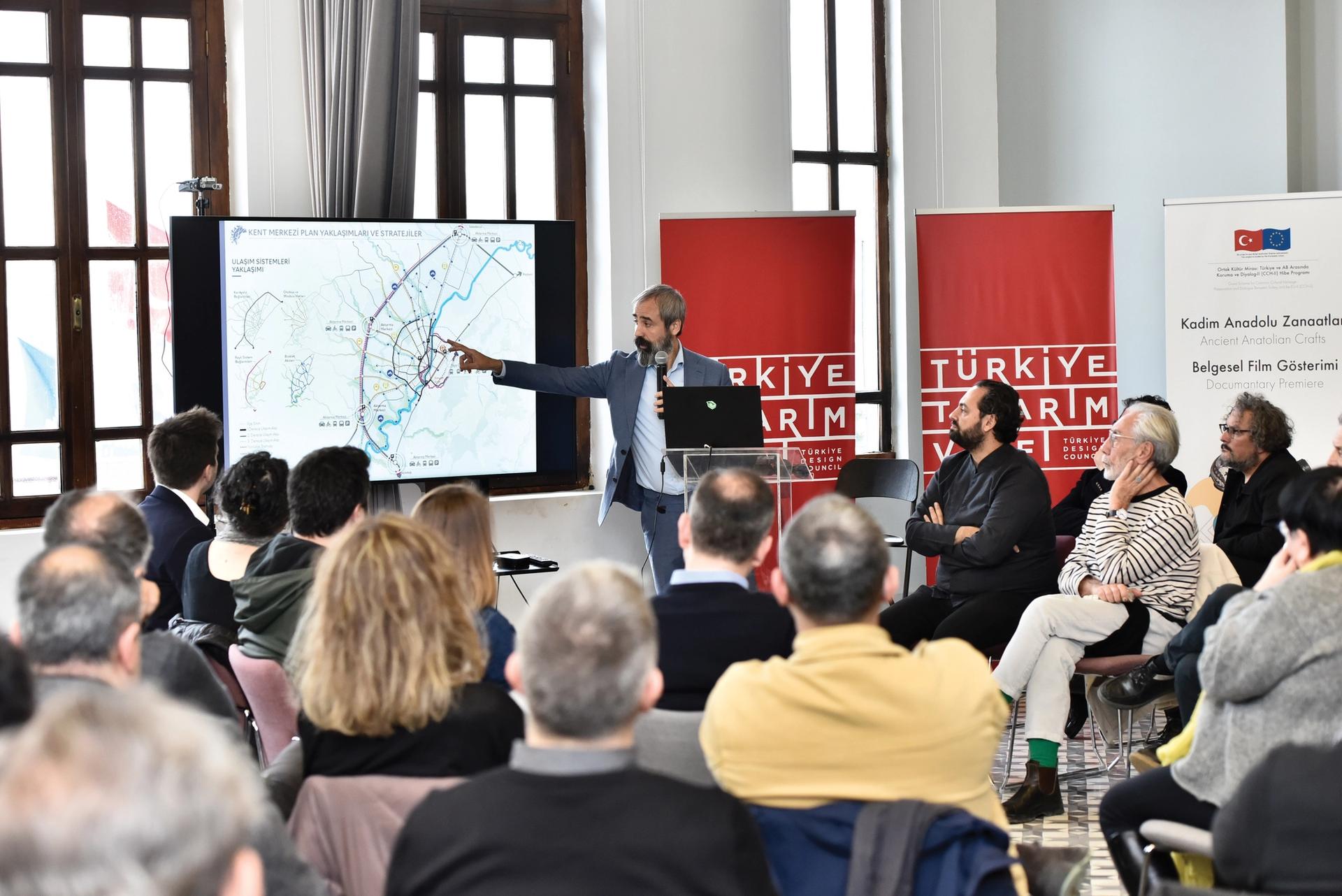Turkey counts cost of earthquake repairs
In a field in the southern Turkish province of Hatay, preservationists are piecing together by hand some of the thousands of historic buildings wrecked by two massive earthquakes a year ago. The Cultural Debris Inventory and Sorting Site, run by the culture ministry, serves as a repository for architectural remnants authorities salvaged from the provincial capital of Antakya after 7.8- and 7.5-magnitude tremors ripped through southern Turkey and northern Syria on 6 February last year, killing at least 60,000 people.
The destruction of millennia-old Antakya’s cultural heritage was so vast that leaving all of the rubble in situ was hazardous, says Betül Kiminsu, the deputy director of Turkey’s Cultural Heritage and Museums Directorate. At the sorting site, 90,000 cubic metres of material is manually separated, catalogued and monitored by security cameras, Kiminsu says. “Everything that could be saved from the rubble—stones, tiling, cabinets, ceiling brackets—was brought there to one day rebuild.”
The painstaking work illustrates the enormity of the reconstruction effort after the earthquakes wreaked $103bn of damage in 11 provinces, according to government figures. Nearly 8,500 cultural sites were harmed across the 280-mile swath of territory.
In Antakya, at least 23,000 people perished out of a population of around 400,000 and more than half of buildings collapsed or had to be demolished. Known as Antioch in antiquity, Antakya is home to a cave housing the Church of Saint Peter, one of the world’s first churches that is still intact. But 15 churches used by the extant Christian community around Hatay were destroyed or damaged and a synagogue was affected in a province that is a rare instance of religious pluralism in modern Turkey.
The government is funding most of the reconstruction of the destroyed Saint Paul’s church, says Ferit Tekbaş, the chairman of the Central Council of Oriental Christians in Germany, who is originally from Hatay. The Greek Orthodox church was built after a previous incarnation was destroyed in 1870 by one of the dozens of quakes that have ravaged Antakya through the ages.

The Turkish Design Council is working with local residents on plans for rebuilding the Hatay region Emre Durmus
A collection that includes Roman and Byzantine mosaics and a two-tonne statue of the Hittite king Suppiluliuma was spared when the Hatay Archaeological Museum was damaged, Kiminsu says, adding that the institution is due to reopen in May 2025 after earthquake reinforcements.
The Habib-i Neccar Mosque, revered as the first Muslim house of worship in Turkey and home to the tomb of John the Baptist, is ruined, as is Hatay’s parliament building from its brief period of independence in the 1930s.
Political expediency
Both are among the historic buildings located in two Antakya districts, covering 307 hectares, that the culture ministry has prioritised for reconstruction. Kiminsu says rebuilding will finish in six to eight months. Critics say a rush to rebuild is politically motivated ahead of nationwide municipal elections this spring. The top-down approach, which has included emergency expropriation of property, will attract speculators and drive out residents, Hatay’s Chamber of Architects has cautioned.
“Local knowledge, including architects like me with archives, information, equipment and data gained from working in this city, wanted to be a part of the process, but it occurred without us,” says Deniz Emir, who has restored dozens of buildings in Antakya.
Antakya is a labyrinth where you can get lost, but it has a logic. Preserving this requires protecting the entire area, not individual structures
Deniz Emir, architect
Moving wreckage to the sorting site incurred more harm, he says. Just a third of the approximately 1,500 buildings in the centre are registered cultural assets, although the rest were integrated into the urban architecture. “Antakya expresses its texture as a city. It is a labyrinth where you can get lost, but it has a logic. Preserving this requires protecting the entire area, not individual structures,” Emir says.
Furkan Demirci, the chairman of the NGO Turkey Design Council, said it is engaged with residents to “preserve the community’s sense of identity, ownership and belonging” in order to develop a government-backed masterplan for parts of Hatay. A dozen Turkish and international architecture firms, including Foster + Partners and Bjarke Ingels Group (BIG), are working on the masterplan, due to be published later this month.
Kiminsu declined to provide the cost of rebuilding Antakya’s heritage sites. A portion of a €400m grant from the European Union for Turkey’s earthquake recovery will go to saving cultural sites in Hatay, “a place of huge historical, cultural and universal importance shared by all of us”, says Nikolaus Meyer-Landrut, the EU ambassador to Turkey.
More than 400 monuments damaged
The needs are staggering, with estimates of the damage to cultural sites across the earthquake zone as high as $2bn. Near the epicentre, the old town of Kahramanmaraş was crushed, levelling 19th-century mansions, important examples of Ottoman civilian architecture, and shearing the top off the 500-year-old minaret of the Grand Mosque.
Kahramanmaraş “has significant monuments from antiquity, the Byzantines, Seljuks, beyliks and Ottomans, 407 of which have been severely, moderately or ruinously damaged”, says the provincial governor Mükerrem Ünlüer. “Seeing the historic houses flattened is painful. We have to revive them as soon as possible, there can be no excuse not to.”
The urgent need for half a million homes throughout the region as survivors languish in emergency shelters could eclipse saving cultural heritage. Yet Demirci said incorporating new housing with the restoration of historic sites would help preserve “the urban memory [so] that residents do not feel alienated from the area”.
Ferit Tekbaş echoed the call for a holistic approach, saying simply rebuilding lost churches will not bring back Christians to their ancient homeland, who numbered a few thousand before the disaster. “Only if a church has a community will it serve as a spiritual refuge. We first need to rebuild their homes, then their workplaces. Or our people will never return.”


